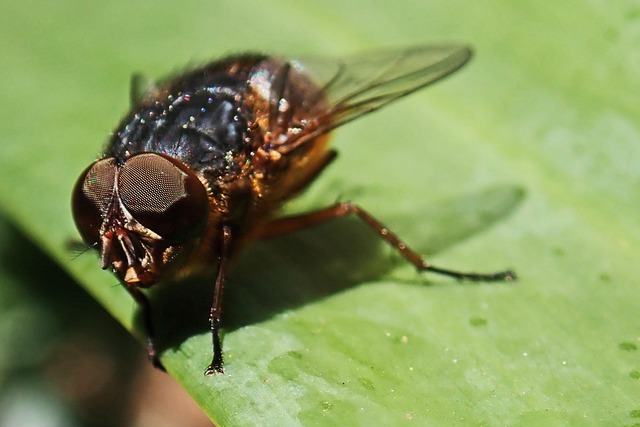In response to growing bed bug infestations and increasing resistance to traditional treatments, modern technologies offer advanced bed bug treatment options like heat, cold, and targeted chemical therapies. These innovative solutions provide faster, more effective pest management while minimizing exposure to harmful chemicals. Heat treatments eliminate bed bugs and eggs using high temperatures, and monitoring devices detect activity for targeted interventions. Eco-friendly methods like these, combined with preventive measures such as regular inspections, sealing entry points, and using certified deterrents, offer comprehensive bed bug treatment options that are both swift and sustainable.
In today’s world, advanced pest control technologies are transforming the way we tackle bed bug infestations. Traditional methods often fall short in providing fast and lasting results, leading to persistent and widespread issues. This article explores innovative solutions, from modern technologies like heat treatments and chemical-free alternatives, to eco-friendly practices that offer effective yet targeted bed bug treatment options. We also delve into preventive measures, emphasizing a proactive approach for complete elimination.
Understanding Bed Bug Infestations and Modern Challenges
Bed bug infestations pose a significant challenge for pest control professionals due to their ability to hide in crevices, cracks, and tight spaces, making traditional methods less effective. These pesky insects have developed resistance to many common bed bug treatment options over time, creating modern challenges in their eradication. With their rapid reproduction rate and elusive nature, bed bugs can spread quickly through infested furniture, clothing, and luggage, leading to widespread infestations in residential and commercial settings alike.
Modern technologies offer innovative solutions to overcome these challenges. Advanced tools such as heat treatment, cold treatments, and targeted chemical applications now provide faster and more lasting results than ever before. These modern bed bug treatment options ensure a thorough and efficient approach, addressing the growing need for effective pest control in an increasingly resistant insect population.
Innovative Technologies for Effective Bed Bug Treatment
In the battle against bed bugs, innovative technologies are transforming pest control into a more precise and effective science. Traditional methods often rely on chemical pesticides that can leave residues and may not always target specific pests. However, modern solutions offer advanced bed bug treatment options with remarkable results. Heat treatment, for instance, utilizes high temperatures to kill bed bugs and their eggs, making it a safe and environmentally friendly approach. This technology ensures minimal damage to personal items and structures while providing fast and lasting relief from these persistent intruders.
Additionally, the integration of monitoring devices and smart sensors is revolutionizing pest management. These tools can detect bed bug activity in real time, allowing for more targeted interventions. By pinpointing the exact locations of infestations, professional exterminators can apply treatments with greater accuracy, reducing the need for extensive spraying. This not only enhances the effectiveness of bed bug treatment but also minimizes exposure to potentially harmful chemicals. As a result, homeowners and businesses alike benefit from swift eradication and prevention strategies tailored by these advanced technologies.
Targeted and Eco-Friendly Pest Control Solutions
In today’s world, advanced pest control technologies offer targeted and eco-friendly solutions that provide fast and lasting results. One of the most sought-after bed bug treatment options, for instance, leverages innovative methods like heat treatments and specialized chemical applications to eliminate pests effectively while minimizing environmental impact. These modern approaches ensure safety for both residents and the ecosystem.
Eco-conscious consumers appreciate these advanced technologies because they use fewer toxic chemicals compared to traditional pest control methods. Targeted solutions, such as using detection dogs or advanced monitoring systems, allow for precise application of treatments, reducing the need for excessive chemical usage. This not only keeps homes and businesses safe but also contributes to a healthier environment, making it a preferred choice for those seeking effective bed bug eradication without compromising sustainability.
Preventive Measures: A Proactive Approach to Elimination
Preventive measures play a pivotal role in advanced pest control, offering a proactive approach to eliminate pests like bed bugs effectively and efficiently. This strategy involves implementing practices that hinder pest intrusion and reproduction before they become a full-blown problem. One key aspect is regular inspection and maintenance of areas prone to pest infestations, such as cracks, crevices, and hard-to-reach spaces. By staying vigilant and addressing potential entry points, homeowners and businesses can significantly reduce the risk of an invasion.
In the context of bed bug treatment options, prevention is a robust defense mechanism. Sealing gaps around pipes, windows, and doors, along with regular laundering of bedding and furniture at high temperatures, disrupts the pests’ access to hosts and breeding grounds. Additionally, using certified and eco-friendly deterrents as part of a multi-layered approach can further fortify defenses against bed bugs and other common pests.
In conclusion, the modern era demands advanced pest control technologies for swift and enduring bed bug management. By understanding infestations, adopting innovative solutions like heat treatments, and embracing eco-friendly methods, we can achieve effective results while minimising environmental impact. Proactive preventive measures are key to eliminating these persistent pests, offering residents lasting relief from unwanted guests. Exploring these diverse bed bug treatment options ensures a more comprehensive and efficient approach to pest control.
